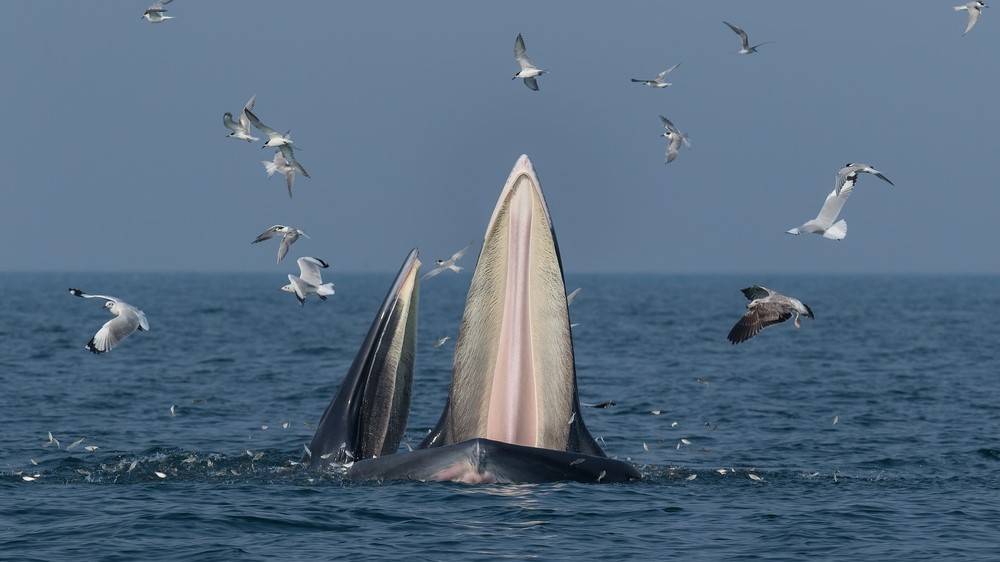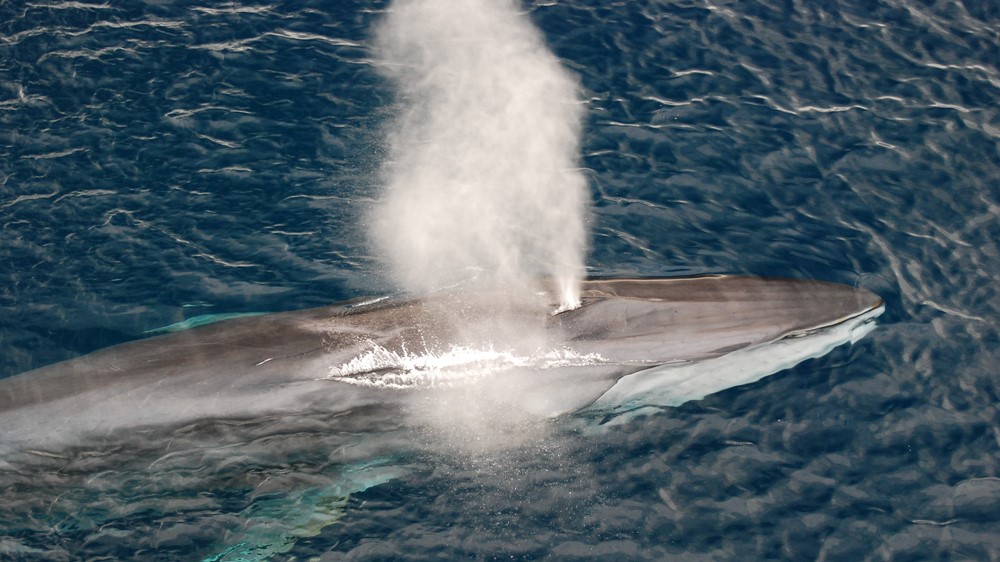Watch footage of 1,000 baleen whales in record-breaking feeding frenzy in Antarctica
Cruise ship passengers near Antarctica witnessed the massive group, which mainly consisted of fin whales, feeding on an overabundance of krill in 2022.

Last year, passengers on board a cruise ship near Antarctica were treated to an extremely rare and spectacular sight: a giant congregation of baleen whales feeding on a gargantuan volume of krill for as far as the eye could see. Although initially estimated at several hundred individuals, the true number of whales in the feeding frenzy may have been closer to 1,000, according to a new study that analyzed footage captured by the lucky whale watchers.
The incredible spectacle was witnessed Jan. 13, 2022, by guests on board the National Geographic Endurance, a polar exploration cruise ship run by Lindblad Expeditions, which is partnered with National Geographic. The ship was around 9.3 miles (15 kilometers) north of Coronation Island, the largest of the South Orkney Islands, when it came across the feeding frenzy, National Geographic reported. The aggregation mainly comprised fin whales (Balaenoptera physalus), which can grow to around 85 feet (26 meters) long and are second in size only to the blue whale (Balaenoptera musculus).
A video of the massive feeding event, which shows fin whales lunging for food at the surface and filling the air with jets of water ejected from their blowholes, was released on the Lindblad Expeditions-National Geographic YouTube channel on March 8, 2022.
"We are absolutely surrounded by them," Conor Ryan, a resident zoologist on board the vessel, said in the video. "They are literally bumping into each other because there are so many of them." There were so many whales that you could even smell the whales' breath, which had an odor similar to "rotten broccoli," he added.
Related: Extremely rare gray whale birth captured on camera, possibly for the first time
Ryan initially estimated that there were between 200 and 400 individuals in the aggregation. But it was hard to tell exactly how many there were, because you could see only the whales that were at the surface and not those feeding below, he noted.
In a new study, published Feb. 20 in the journal Ecology, Ryan and colleagues reanalyzed photos and videos from the event to better estimate how many whales were present. The researchers determined that there were around 970 fin whales in the "supergroup," which makes it the largest aggregation of the species ever recorded. There was also at least one blue whale and a pair of humpback whales (Megaptera novaeangliae) in the area, as well as Antarctic fur seals (Arctocephalus gazella) and thousands of seabirds, including petrels, penguins and albatrosses.
Sign up for the Live Science daily newsletter now
Get the world’s most fascinating discoveries delivered straight to your inbox.

All of the hungry marine animals were feeding on Antarctic krill (Euphausia superba), tiny swimming crustaceans that form massive swarms, as well as the smaller fish that were also feeding on the shrimp-like critters.
This area of the Scotia Sea, which surrounds the South Orkney Islands, is a massive upwelling zone, meaning ocean currents force nutrient-rich waters from the deep to the surface. The feeding event occurred at the end of "a large spring phytoplankton bloom," which provided the necessary food for a rapid explosion in the population of krill, the researchers wrote in the paper.
"There must be millions, if not billions, of tons of krill below us," Ryan said in the video.
Fin whale numbers are on the rise again after historic whaling almost decimated the species in the mid-20th century. There are now around 100,000 individuals worldwide, but they are still considered "vulnerable" to extinction due to pressures such as climate change, plastic pollution and overfishing of krill by humans, according to the International Union for Conservation of Nature's (IUCN) Red List of Threatened Species.
Nevertheless, the sight of such a large group provides hope for conservationists about the species' future.
"A little more than a hundred years ago, seeing something like this probably wouldn't have been that uncommon," study co-author Matthew Savoca, a marine ecologist at Stanford University's Hopkins Marine Station, told National Geographic. This is a sign that we are heading in the right direction, he added.

Harry is a U.K.-based senior staff writer at Live Science. He studied marine biology at the University of Exeter before training to become a journalist. He covers a wide range of topics including space exploration, planetary science, space weather, climate change, animal behavior and paleontology. His recent work on the solar maximum won "best space submission" at the 2024 Aerospace Media Awards and was shortlisted in the "top scoop" category at the NCTJ Awards for Excellence in 2023. He also writes Live Science's weekly Earth from space series.










